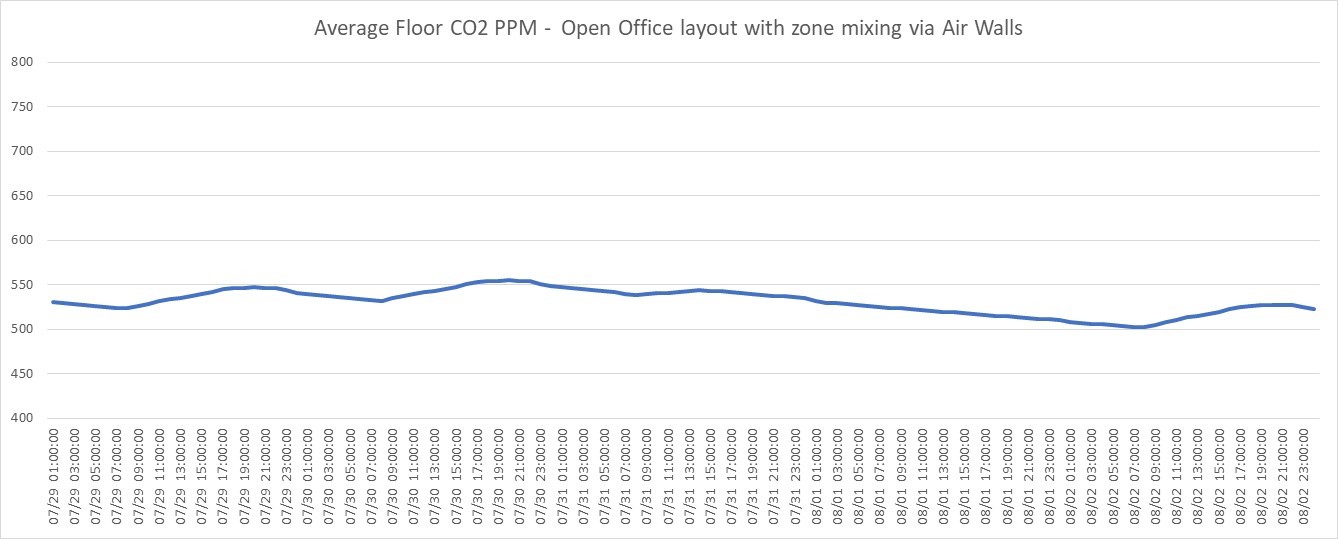Indoor CO2 variation with inter-zone mixing vs no mixing
I am tracking is indoor CO2 for a project using E+. The model is one floor with air walls ( with interzone air mixing) and one solid wall core. The OA is 17 cfm/person. The outdoor CO2 is a fixed 400ppm. What I am observing is that when I measure the average CO2 in the office I get a pretty steady rate between 525 to 550 ppm (graph below). What’s strange is that the PPM values never gets close to 400 even when there is no occupancy at night or on Sunday (08/01). Now when rerun the same model but with no zone mixing I get a very different ppm graph never reaches steady state but keeps rising till the end of the day around 8 pm (end of occupancy) and then drops. The values now drop to 400 ppm when unoccupied and that makes sense to me. My question is why would zone mixing (or not mixing) affect the floor average CO2 PPM since the CO2 generation is the same and the OA ventilation is the same. Which one is correct ? I think it’s the second graph but sure what’s going in the first graph. Appreciate any insights.











Are all of the zones occupied? and are your plots for a single zone, or did you consolidate all of the zones (with volume weighted building average)? The reason I ask is that if only one zone had people, and if you were plotting results for that zone, then I would expect the air mixing to dilute the CO2, although that wouldn't explain why it doesn't drop to 400 PPM at night with air mixing. I'm interested to hear from someone with more CO2 modeling experience what the cause is.
David....all the zones are occupied and they have the same occupant density . The plot is the average of all the zone PPMs. Still not sure of what to make of the results
Hi @Rdutta, I'm experiecing a similar problem as you had, did you ever find a solution or what was causing the issue?